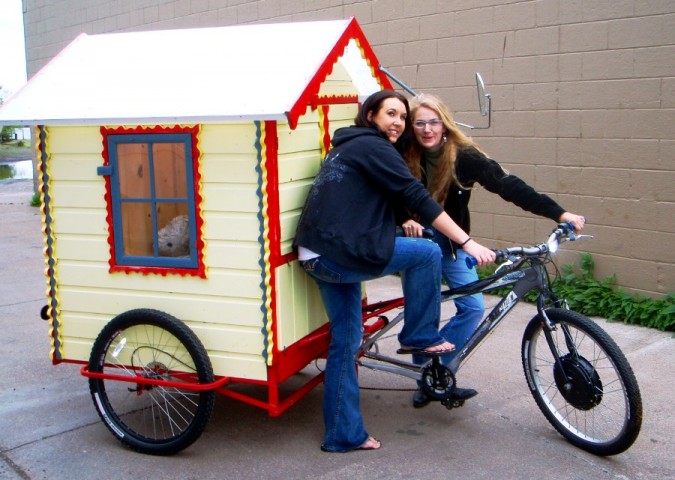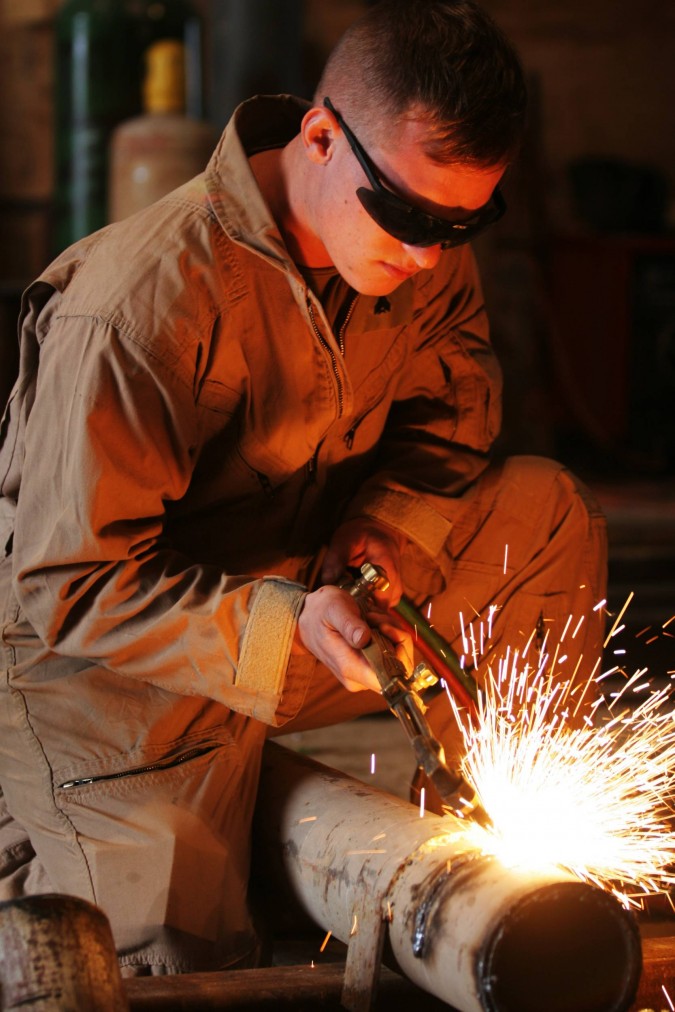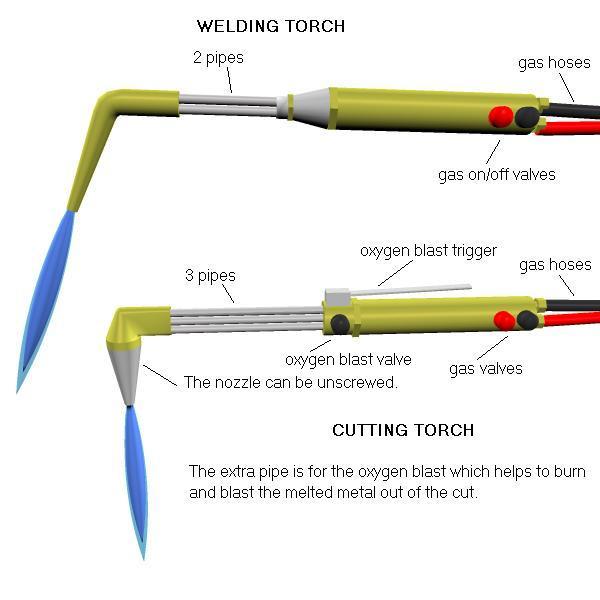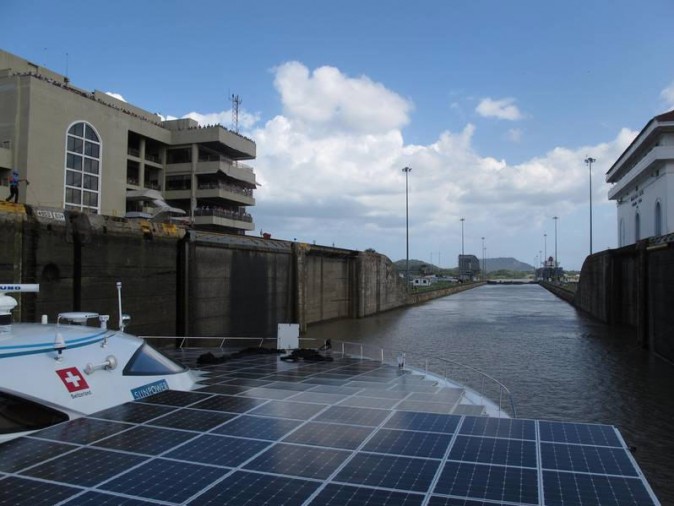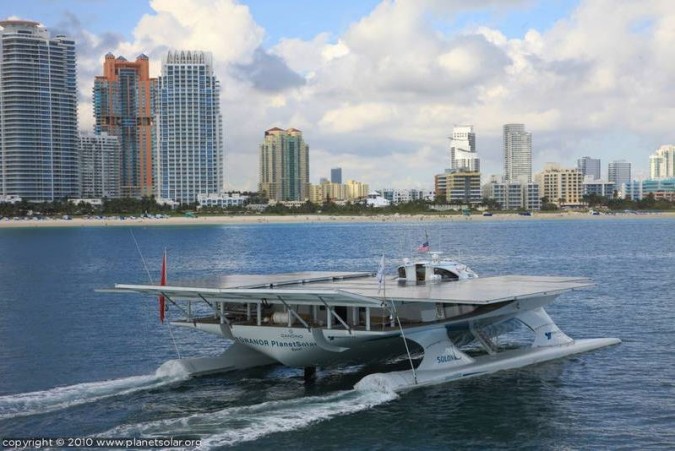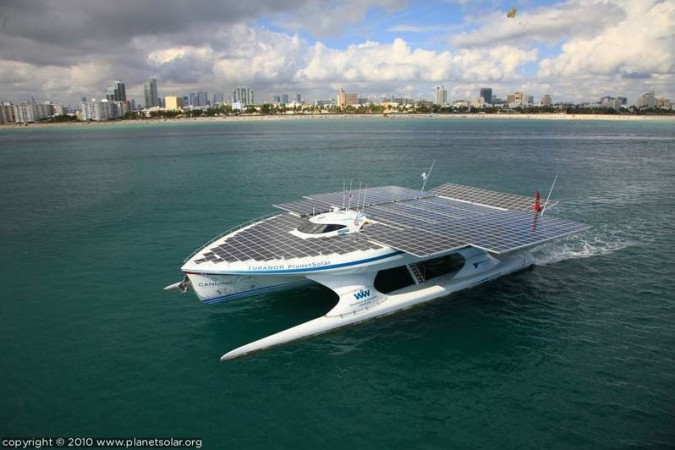Archive for the ‘Bus conversions’ Category
Hummer hits school bus
I found this picture years ago. Sadly, I can’t remember where I found it, or I would give the publication credit.
This photo appears to show what happens when you drive your Hummer sports utility vehicle into a school bus.
It sure looks like the Hummer driver was severely injured or killed. I hope I am mistaken.
It sure looks like there were no injuries to the bus driver or any of his or her passengers.
Bicycle conversion to bicycle-home
As you know, I’m a big fan of bus conversions, that is, commercial buses that are outfitted with living quarters and retitled as motor homes.
One of the downsides of bus conversions is they consume diesel fuel. Yes, if you travel with a group and avoid hotels, restaurants and convenience stores, they are probably the most efficient form of travel and on the road sustenance.
Here’s a greener solution I discovered today, a ‘bicycle conversion.’ It sure is cute, don’t you think?
It appears to have an electric motor in the front wheel hub, and I presume there are batteries in the house. I’m surprised there aren’t solar panels on the roof to charge the batteries.
This bike was custom built by Superior North Outdoor Center & Bike Shop, of Grand Marais. MN. The house was built by Ken & Molly Hoffman. Here’s a video of Anna Klobuchar briefly riding the bike house, courtesty of the Velomarais bike shop website.
While this looks too small to sleep in, I don’t see why the house couldn’t be lengthened. Yes, it would get heavier, but perhaps more batteries could be included, and perhaps two of the wheels could be motorized. I’ve seen some extremely long two person bikes with solar panels at Maker Faire, bikes that are longer than this house would need to be even if made long enough to sleep in. What a conversation starter this would be for someone to bike across a country in. The rider could blog the entire way, and I suspect he or she could find unlimited front or backyards to camp in free of charge, just by soliciting invitations on their blog. A few choice ads on the outside of the house and bike might even pay for the incidentals required along the way. I love it!
I’m selling my RTS bus conversion!
I can’t believe I’m writing this, but I’ve decided to sell my RTS bus conversion. My heart just isn’t in it anymore…
I learned oxyacetylene welding and cutting last week at TechShop
I took a class on April 2, 2011 at TechShop in Menlo Park, California to learn oxyacetylene welding and cutting.
I butt welded two pieces of carbon steel together. I only got to try this once, as there were 2 other students and limited time. Liisa, the instructor, gave me millimeter-by-millimeter instruction as I was welding. She’s a good teacher because after the welded steel cooled, we put it into a bench vise and tried to snap apart the weld by banging it hard with a mallet.
It didn’t snap — instead, the metal bent 90 degrees just like it would have if there had been a single piece of steel in the vise. While it wasn’t a pretty weld, it did seem to hold well.
I found oxyacetylene welding to be easier than TiG welding, which I also learned at TechShop, on January 30, 2011.
The really exciting part of the class, however, was learning to cut steel with the torch. On my first try, I cut 3/8″ thick plate steel like it was Jello brand gelatin.
Sadly, one can cut only carbon steel with an oxyacetylene torch — stainless steel and aluminum won’t cut. You can melt a crude break in the metal, but that’s not the same as what happens when properly fuel cutting carbon steel, which is the rapid oxidation of the steel in the presence of a lot of pure oxygen. The pressure setting for oxygen when cutting is 25 psi. The oxygen pressure when welding is 2.5 psi, so that should give you an idea of how much more oxygen there is when cutting.
I took the class to learn how to cut metal on my RTS bus conversion. I didn’t know oxyacetylene can’t cut stainless steel. My RTS is nearly all stainless steel. Fortunately, a plasma cutter will cut stainless steel, and TechShop also has a plasma cutter. That’s a different class.
If you’ve ever wanted to weld, don’t be nervous like I was for so many years. Just jump in and take a class. It’s fun!
I want to drive my bus conversion around the world to promote green living
Last year I read the book Take your RV to Europe by Adelle and Ron Milavsky. This book was inspiring, for it made me want to take my RTS bus conversion to Europe, and I have been planning this trip now for about a year. Last year I told my entire family about my plans.
The authors of Take your RV to Europe took their Toyota based class C RV to Europe, and now leave it parked there full time so they can fly over and go on extended multi-month voyages as they please without the hassle of shipping the vehicle over for each trip.
I got shipping quotes last year around June of 2010, and the price is about $7,000 each way to take my 40 foot long conversion to The Port of Rotterdam, Netherlands from The Port of Oakland, California, the nearest large ocean shipping port to my house.
My plan has been to spend a solid year traveling and living in the conversion full time. The book makes it clear that Europe is very friendly to recreational vehicles, much more so that is the United States. In most medium and large European cities there are RV parks, unlike in the US. For example, there are large RV parks in London and Paris. The one in Paris is walking distance to a Metro station… just outstanding. There are no RV parks in San Francisco, where I live, one of the most popular tourist destinations in the world… just awful.
Take your RV to Europe makes a strong case that shipping your RV to Europe is the least costly way to travel for an extended time in Europe.
Fuel is costly in Europe, granted, but distances are short compared to the US.
Restaurant food is costly, so being able to cook on board the RV saves a fortune compared to staying in hotels or even youth hostels. I stayed in a couple of different youth hostels in 2009 when I was in Amsterdam, Netherlands, and I recall paying around 40 Euros a night, which really adds up, particularly since you need to buy lunch and dinner on your own. If I were to do an extended tour of Europe, I would hope I had a new girlfriend or wife by then and would be able to bring her along.
While it may be a while before I embark on a European bus conversion adventure, I wanted to share with you my newest variant of my dream, which I am really excited about:
I want to elevate my trip from a mere road trip into a voyage to change the world.
As you know now from my frequent posts about my plans to build many green features into my beloved RTS, I am passionate about living efficiently. While I own a 1,600 square foot house in the center of San Francisco, California USA, I don’t use all that space for just myself. I rent out most of it to my 4 roommates. Divided evenly, that comes to 320 square feet per person, which is close to the area inside my bus conversion.
Most of the inhabitants of the world live in dwellings much smaller than the average US house.
There are many great advantages to choosing to live in smaller dwellings — interest savings, maintenance savings, time savings, energy savings and mental energy savings, for example.
My green bus will be loaded with technology that will showcase how green living can still be richly pleasurable and rewarding. Few people have ever stepped foot in a truly green home, in part because few such homes exist. They certainly don’t exist in every city and town in the US and Europe. But my green RTS can visit such towns and cities with relative ease.
I hope to be able to change the world by showing people my green bus and telling them about it. I am already working hard to develop my journalism skills by building up my audience for this blog at KevinWarnock.com. I am not scared to speak in public, and I’ve been interviewed on the radio before, while I was CEO at Hotpaper.com, my first Internet startup from the first dot com boom in the 1990s.
I envision arriving in a new city or town and parking my green bus conversion right in front of the venue I will be speaking at. There, I will spend the night. I will address the group assembled by my host and then invite the group to tour my green home. Since it will be my actual home for an extended period, it will be believable in a way that I think most model futuristic homes are not, because they don’t look lived in, because they are not lived in.
I will get my start on this public speaking circuit in the San Francisco Bay Area, where there are many receptive audiences for my green messages. As I build my blog readership and get speaking credits, I hope to get more radio interviews and then television interviews.
At this point, when my ideas are getting more attention, I hope that I will be able to recruit sponsors to help me pay for my eventual adventure traveling around Europe, which will cost perhaps $50,000 for the year. I have been thinking of getting sponsors for a while now, but I really decided to try to make it actually happen when I read the inspirational stories at PlanetSolar.org, which describes a solar electrically powered yacht circumnavigating the globe right now to help publicize the potential of solar electricity. The owners of the Planet Solar craft got sponsors to help pay for the project, which probably has a cost surpassing $20 million, since the boat alone reportedly cost $17.5 million. I first learned of the PlanetSolar project in National Geographic magazine, which my roommate Marie had on the dining room table last week. Thank you Marie.
I need to make friends with the Planet Solar team, including Patrick Marchesseau, the ship’s master.
My green bus conversion offers many opportunities for sponsorship. With slide out trays, I could probably fit $20,000 of solar panels on the roof, which would be enough to fully air condition the vehicle on a hot sunny day. For a large house, it might take $200,000 of solar panels to do the same, which is just too expensive for most to even consider. But if people could reduce their living space, all kinds of formerly cost prohibitive technologies become affordable. While $20,000 is still a lot of money, over time it’s not much, considering those solar panels will last for a quarter of a century. Electricity will cost a lot more then than now, so after inflation, the $20,000 really won’t seem like much. Right now I only have $1,000 worth of solar panels on the roof, due to budget constraints.
Buses routinely have billboards on their sides, so sponsors could show off their participation in return for their help. Such ads would help me spread the word as well, as they would draw attention to me and help me start conversations wherever I park.
When I downloaded the picture above of the Planet Solar craft navigating through the Panama Canal, I noticed the SunPower logo on the side. My friend Matt Campbell works at SunPower. Maybe he’ll introduce me to their sponsorship group? Are you reading this Matt?
Once I get sponsors, I would probably have to register my RTS as a commercial vehicle and begin paying commercial vehicle insurance rates. As a side note, I insure my RTS with Progressive Insurance, and I recommend this company.
I want to be perfectly clear that currently I accept no sponsorships and am not running any kind of a business with my RTS. Right now it’s my hobby with no business angle whatsoever. It actually costs me a lot, as you might well guess. Commercial insurance is expensive, so I would love to one day get an insurance company as a sponsor, so they could insure it as part of their sponsorship.
Why would an insurance company care? I suspect that solar panel insurance is going to be big business one day, as having tens of thousands of easily re-sellable and highly durable panels just sitting on a roof makes them a target for thieves.
With the right sponsors, I might one day even upgrade the vehicle drivetrain. It is a bit ridiculous to be advocating super green living while driving a vehicle that gets only 11 miles to the gallon on the freeway. It would be much better to use a modern electric drivetrain, from one of the innovative startups working hard on such things, such as Motiv Power Systems, which recently received a 7 figure government grant to develop electric power-trains for shuttle buses. These drivetrains are expensive for non transit system use, but with a sponsor they could be practical. If my green bus conversion were all electric, I could see getting featured on prime time network and cable television shows in every country I visit. I know the founders at Motiv Power Systems, and they are passionate about their dream to electrify transit buses. I’m not sure their drivetrains are suitable for intracity travel.
Once I tour Europe, I can then see touring Asia and the United States. I don’t plan to tour the US first as I’ve already driven across the US in my bus once, and the distances are so great I fear I would spend more time driving than speaking and showing, which I believe are key to changing perceptions about how much space is needed for a happy life. I also believe audiences in Europe and Asia will be more receptive to my ideas since their residents already live in smaller dwellings and pay much more for energy than residents do in the United States.
Solar electricity powered yacht circles the globe – features slide out solar panels like I plan for my bus conversion
When I recently wrote about adding slide out solar panels to my bus I’m converting to a green home on wheels, I wondered if I was the first to think of putting solar panels on slide out roof panels on a bus conversion.
It seemed like such a simple idea that I couldn’t have been the first to think of it.
I still don’t know if I am, but I was excited this week to learn that someone has already built a solar powered yacht with slide out solar panels.
This yacht, named TÛRANOR PlanetSolar, is currently being piloted around the world, propelled exclusively by solar photovoltaic generated electricity.
The outbound ‘wings’ that hang over the sides of the vessel slide out to give more surface area for solar energy collection.
I plan to add similar but smaller wings to my RTS bus conversion.
Have a look at the planet solar website… it’s impressive. They have sponsors and issue press releases frequently. It’s inspirational to me.
Perhaps I can recruit sponsors to help me quickly finish my RTS bus conversion and circumnavigate the globe on land, spreading the word about how possible it is with current technology to live well while consuming far less energy.
Profile former pipe bending machine – I want one
I am continuing to work on my RTS bus conversion on weekends and in the evenings.
My current project is designing a sliding window shade that insulates the window when closed. Sadly, the RTS has single pane windows, and double pane windows are not available. For most conversions, one can buy factory new double pane replacement windows from Motion Windows. You send them a tracing of the original windows and they ship you a wooden crate with double pane windows that fit perfectly. That is possible because most buses used for conversions have flat glass in the side windows.
But my RTS was designed by General Motors, and they wanted a curvy modern shape to the vehicle like a car would have. The glass panes are curved, and Motion Windows can’t make a double pane curved pane window.
As a result, I will make sliding window shades that fit in a track lined with wool felt. Passenger airline windows are the closest example of what I envision. When you raise the shade, the shade disappears up into the inside of the ceiling, so that most of the shade is parallel to the roof when raised.
I built a prototype some time back, and the idea worked, but the sliding of the shade was stiff, and it sometimes got stuck and needed to be lowered and raised again in one smooth action. The cause of this was the complete lack of suitable bearings on the shade, which was a piece of unmounted countertop Formica plastic laminate.
My new version uses Delrin ball roller bearings on the sides of a 1/32″ thick sheet of 5052 aluminum, which is bendable such that it can conform to the curve where the wall meets the ceiling.
I envision that the bearings will roll against 3/8″ square aluminum bar on the left and right of the shade, perpendicular to the floor. What’s been troubling me for a long while is how will I form the gentle yet variable radius bend into the aluminum so that I can install it. Today on YouTube I discovered the machine I need. I don’t know if TechShop has one of these, but if they don’t I suspect some machine shop in San Francisco has one and that I could have them bend the 20 pieces I’ll need to complete the shades. It would seem these could all be bent in an hour or three by someone who knows how to use the machine.
It may also be quite practical for me to simply build a wooden bending form that incorporates the varying curves I need, and just bend them with my own arms, as 3/8″ is not that thick. I suspect this is the way I’ll go. However, the machine I found is so impressive I wanted to write a post about it and show you the video.
I will insulate the aluminum shade with Reflectix brand reflective ‘bubble wrap’ style insulation. This insulation looks like bubble wrap sandwiched between two layers of aluminum foil. It’s very flexible, and the foil part is a plastic foil, not real aluminum foil, so it can be bent many times without cracking. Reflectix is also thin, so it will be able to glide up into the ceiling cavity without binding. This tight fitting shade with its Reflectix backing will probably insulate as well as the costly Motion Windows, and I get a built in window shade that should look high tech and sleek. My prototype certainly looked sleek, and I believe the improved aluminum version will be quite handsome. I’ll keep you posted on my progress.
Why not turn off electricity when smoke detector activates on a bus conversion?
I’m in the middle of converting an RTS bus to a motorhome. I read Bus Conversions Magazine to learn construction techniques. The discussion forum hosted by Bus Conversions Magazine is outstanding, and I visit this forum daily.
Sadly, some bus conversions burn to the ground.
What a tragic event that would be if it happened to my bus conversion.
These things really represent a lot of work, and getting a check from the insurance company would still mean you’d have to duplicate a lot of work to make a new one. Yes, you could buy an already finished conversion, but there won’t be another conversion anywhere in the world like mine when I’m done with it, it’s going to be that unusual.
So I want to make it very unlikely my bus will ever burn to the ground. I’ve already talked about putting the generator on the roof in a previous post. That should help a lot since many bus fires start in the generator compartment, typically in a storage bay, and burn up from there. If any fire started on the roof, it would be hard for it to burn down, especially since the box I will put the engine in will be made of metal and lined with cement board and rock wool type insulation that can’t burn. I will also put auto closing trap doors on the air inlet and exhaust, so that if there’s a fire, oxygen to the box will be shut off in seconds, which should snuff out any fire almost immediately.
Another big source of bus conversion fires are electrical fires. To limit the chance of an electrical fire, I am not going to install many wires in the ceiling and exterior walls, which will be insulated with spray foam. Spray foam is highly flamable, and when it burns, it makes toxic gas that can kill you very quickly. So I will keep most of the wires I add inside metal conduit elsewhere that’s not close to spray foam.
The manufacturer of my RTS, TMC Corporation, ran several large bundles of wire in the ceiling, and these are required for the vehicle to run at all. There are perhaps 100 conductors, and it would be risky to try to make them longer so I could run them somewhere else, so I will leave them in place. However, I am looking into encapsulating them in a fire stop product.
The above precautions are straight forward. What I’m going to write about today is less straight forward, and I would like comments as to whether what I’ve dreamt up would be a good idea to implement.
I’m considering installing smoke detectors that include a relay to control unrelated circuits. If the alarm trips, a totally separate electrical circuit can be closed or opened, depending on how you wire the relay.
What I am thinking about doing is using the smoke detector to control a set of motorized linear actuators that would be installed next to and attached to the actuation paddle of each of the master circuit breakers and master battery disconect switches on board. When the actuator is engergized, and motor inside it turns some gears which cause a plunger to move in a straight line for x number of inches. When the polarity of the energizing power is reversed, the actuator plunger moves in reverse. In this way, formerly manually operated switches and circuit breakers are now electrically controllable.
My RTS before the conversion was started had 2 master battery disconnect switches, in the battery compartment. These switches take some effort to push, thus my selection of an actuator that can push or pull 100 pounds. I would not allow the actuators to operate these main vehicle power switches when the bus conversion engine is running, since it could be dangerous to shut down the engine while underway, even if there’s a fire on board somewhere.
My RTS after conversion will additionally have 3 master circuit breakers, as follows:
- AC shore power master breaker
- 24 volt house battery bank master breaker
- 12 volt house battery bank master breaker
If all 5 breakers were shut off in the event of fire, it would seem that an electrical fire might not get as far as if there were power flowing. What I don’t know though is if an electrical fire has caused enough smoke to trigger a smoke alarm, does that mean that even if the power is switched off that it will accelerate or continue burning?
Of course, it could be traumatic if you’re cooking dinner at night, set off a smoke alarm and are plummeted into darkness. But I almost always have my phone with me, and that doubles as a flashlight, so I’m not that worried about that. In addition, the System Sensor manufacturer of detectors I linked to above offers a model that has two degrees of alarm severity — smoke and heat. A local alarm is triggered with smoke alone and a general alarm is triggered when the built in heat sensor is activated. This might be the model to install in the kitchen/living room compartment of my 4 compartment bus conversion. Many of the System Sensor detectors run on 12 or 24 volts direct current, perfect for a bus conversion, and can be networked together so they all make noise when one activates.
Another downside is a small fire might be safely extinguished with a garden hose, which will need the pump active to pump water. But I would make it easy to reverse direction of the linear actuators so I could turn the power back on quickly, and I could have a dedicated circuit for the water pump that wouldn’t be shut off in the event of fire.
There probably is a good reason not to implement this idea, because if it was such a good idea, why isn’t it implemented widely in buildings? Linear actuators are cheap and plentiful, as are networked smoke detectors that can switch external circuits. If this idea were required by code, the price of these items would plummet, like what must have happened with ground fault circuit interrupters, which are so inexpensive I can hardly trust them, given how critical it is that they work for decades without attention.
However, there’s a chance this idea hasn’t been seriously considered and tested. I would love to start a debate in the comments here or on the Bus Conversions Magazine discussion forum, where my member name is ‘Kevin Warnock.’
PS – I want to express my condolences to Mike Sullivan, the CEO and President of Bus Conversions Magazine, who lost his Mother Dorothy Sullivan today.
A heartwarming story about buses and their role in Civil Rights history
Here’s a heartwarming story about buses, which, as you know, I love:
I hope Harbor Freight never gets acquired
I love the tool store Harbor Freight. To my knowledge, there’s no store like it in the San Francisco Bay Area, and perhaps in the entire United States.
What’s to love?
The prices are just so far below those at Home Depot and Lowes and the neighborhood hardware store that you can afford to by twice or three times as many tools. I can’t think of any other example of a large sector where just one business dominates the bargain priced end of the business as does Harbor Freight.
Some will say Harbor Freight tools are junk, but I disagree. They are quite good enough for home hobbyist use. I’ve only had one power tool break, but I was really overdoing it – getting it too hot by continuous use for over an hour. It was an electric planer. I replaced it for a new one for just $39.95. Not a big deal, and I learned my lesson to give the tools more of a break to cool down.
I fear that if Home Depot or Lowes were to acquire Harbor Freight they would either raise the prices or shut it down, to avoid the competition.
What’s my latest super bargain purchase from Harbor Freight? An 11 horsepower gas engine with an iron clad two year extended warranty where they give you a new engine if the original one breaks. All you have to do is bring in in any condition what’s left of the engine and they immediately hand you a new unopened new engine in the box. All of this for under $300! I am going to make a super quiet battery charger from this engine by having it run at idle, not full speed. Idle is about 1,800 RPM, like a high end diesel generator that costs $5,000 and up. I don’t need or want the 5,000 – 10,000 watts that are produced by a high end diesel generator. I would be thrilled with a quiet 1,500 watt generator, which is what I hope to get from this Harbor Freight engine run through my Trace SW4024 inverter via a Delco 105 amp 24 volt alternator, I picked one up last week on EBay today for less than $100 including shipping. I will put this engine in a sound box and cool it with a pair of Honda Civic car engine radiators I got new from Amazon for $160 including a dedicated 12 volt radiator fan matched to the radiator that will be outside the sound deadening enclosure. Once I convert the engine to run on propane, I’ll have an electric start quiet, environmentally friendly and very quiet generator for a very low price. Should the engine blow up for any reason, I get a brand new one with no questions asked. I could even carry a spare since they weigh just 74 pounds.
Harbor Freight makes inventing, building and experimenting easier to afford, and I’m glad they appear to be thriving.
Even so, there is probably a dark side to Harbor Freight such as cruel working conditions that I don’t know about. If you have any information about such things, please post a thoughtful comment. I could be persuaded to not shop there if warranted, but to my knowledge their products are made in China, just like I suspect most of the tools for sale at the big box super centers.

